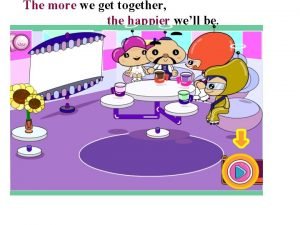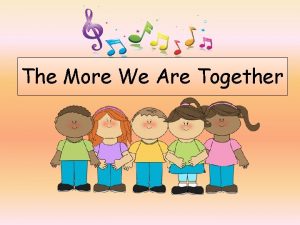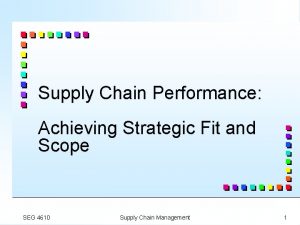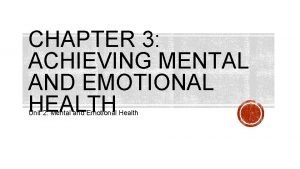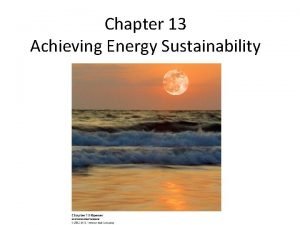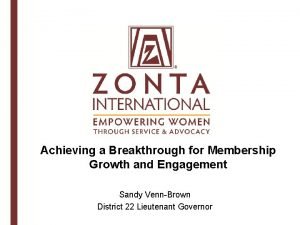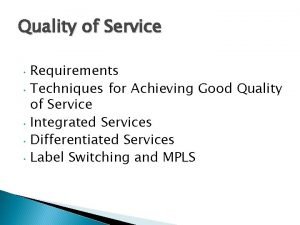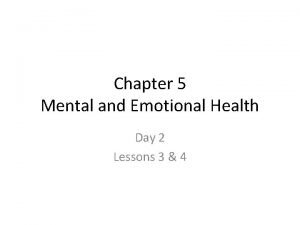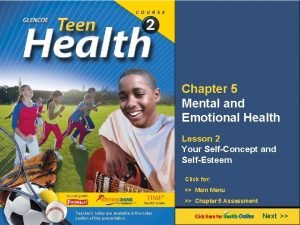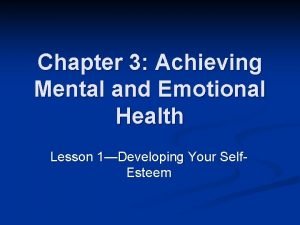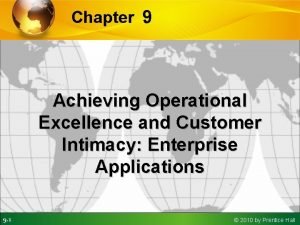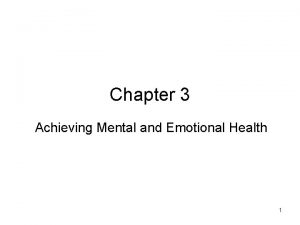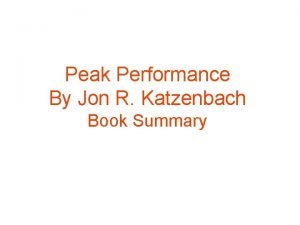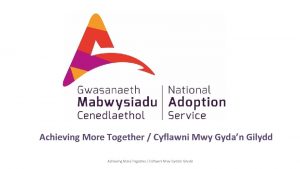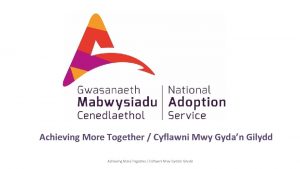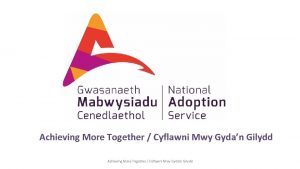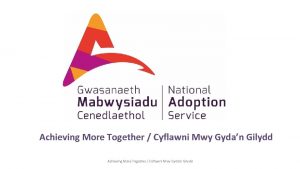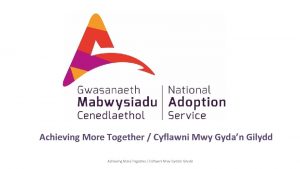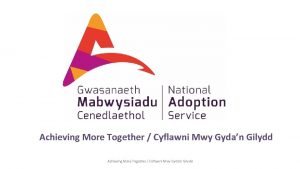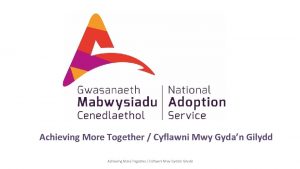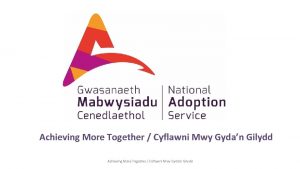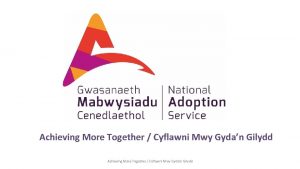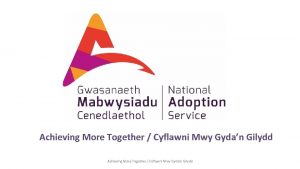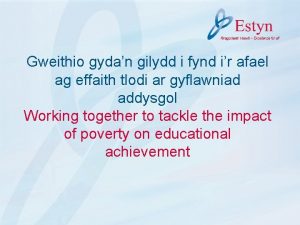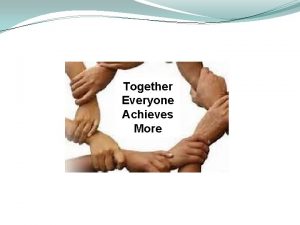Achieving More Together Cyflawni Mwy Gydan Gilydd Achieving




























- Slides: 28

Achieving More Together / Cyflawni Mwy Gyda’n Gilydd Achieving More Together / Cyflawni Mwy Gyda'n Gilydd

The NAS Post Adoption Training and Development Framework • These materials have been developed for the National Adoption Service for adoptive families • Their purpose is to provide a learning and development resource for adopters post placement • These tools can be used by groups or by individuals. • There is lots of information in the notes below each slide so it is important to read these too as they provide much more information, and some useful ideas for more reading. Achieving More Together / Cyflawni Mwy Gyda'n Gilydd

First things first…what do we mean by contact? • Contact is the term used to describe how a child keeps in touch with people from their past. • It could be brothers and sisters, birth parents or other birth relatives, former foster carers, old friends for example. Achieving More Together / Cyflawni Mwy Gyda'n Gilydd

How does it happen? • Contact can happen in different ways. • Some children ad young people have so called direct contact i. e. they meet with people face to face or talk over Skype or the phone. • Others have indirect contact. This might be through letters exchanged directly or via what's called a Letter Box Service. • A Letter Box Service is run by the local authority. They effectively become a postal address for things to be sent to rreceiving letters and forwarding them on. Achieving More Together / Cyflawni Mwy Gyda'n Gilydd

So… • Research shows that the majority of people who have grown up as adopted children, are clear that in most cases contact is (or would have been) beneficial and assisted with the development of identity and their emotional development. • This is because it helps people feel that their birth family, and their adopted family are all acceptable parts of their identity. • Being open about these things helps children process what has happened to them, so they can develop a constructive and therapeutic narrative about the past – • It’s part of their life journey so have a look things to do with this too. Achieving More Together / Cyflawni Mwy Gyda'n Gilydd

Why think about contact? • Because…. if you start from an understanding about why contact helps children's development, its easier to apply these ideas to any of the people who have been significant to your child in the past. • This approach is helpful because each child is unique and so are their needs around contact. • The who and the how of contact will be as individual as they are and what they need is likely to change over time. Achieving More Together / Cyflawni Mwy Gyda'n Gilydd

Feelings • Find someone that you can talk to about how you feel … its ok , and perfectly normal, to have mixed feelings. • If you have good support yourself, you can provide a secure base for your child. And if they feel secure they will be better able to explore their thoughts and feelings and come to terms with their identity as an adopted adult. Achieving More Together / Cyflawni Mwy Gyda'n Gilydd

Impact on the adoptive family • Contact can trigger all sorts of feelings, questions and insecurities for your child … and also for you as an adoptive parents. • Your feelings are really significant in terms of how your child is able to manage contact. • If you are relaxed, your child is more likely to be able to use the contact in a way that helps them in a constructive way. • Think about who you can talk to about how you feel. Achieving More Together / Cyflawni Mwy Gyda'n Gilydd

Openness • Being open with your child about their adoption and their feelings about people from their past may seem daunting to start with …. be brave…. most adopters find it gets easier with time. • If there isn’t openness then your child can feel left with their thoughts and feelings about their past. • Their questions will change over time e. g. four year-olds will accept explanations in fairly concrete terms but your fourteen year-old may want a different type of information. Achieving More Together / Cyflawni Mwy Gyda'n Gilydd

Risks • Adoptive families often dread birth families or other discovering where the child is now living. • If it happens it’s worth taking a breath and try to think through what is the actual risk. – Is there evidence that a birth parent will cause harm – What is the risk for the child if they establish contact without you being involved – both emotional and practical risks need to be thought about. • Identify someone in your support network to talk things through with and ask your adoption support team for help • With digital media so easily accessible to children and young people, its increasingly likely that you may not be in a position to control all communication channels as your child gets older. • Having an open line of communication and helping your child think through the risks and benefits of contact is essential so they can make the right choices for them in the future. Achieving More Together / Cyflawni Mwy Gyda'n Gilydd

Contact in a connected world • Easy access to the internet means that it can be inevitable that children and young people can look for birth relatives, siblings and others on line. • Many parents also worry that their adopted children will be traced. • Being open and willing to discuss these things is really important. It helps children to be open with you and increases the likelihood that you will know if this becomes an issue for them. • If you can stand alongside them, however painful, it means they have help to enable them to feel secure and to help them to regulate their emotions. Achieving More Together / Cyflawni Mwy Gyda'n Gilydd

Making decisions about contact • The starting point for thinking about contact for your child is to remember that the aim of contact arrangements is that they are developmentally beneficial for the child. – At times people forget this and the arrangements made reflect the needs of the adults involved and not those of the child. • To make decisions you need to consider the risks and benefits of each arrangement. • These will change over time, as peoples circumstances change, and as the child’s thinking develops with their age and growing understanding. • They will need to develop these skills too. Achieving More Together / Cyflawni Mwy Gyda'n Gilydd

Making the contact plan • It’s good practice to have an agreement with adopters about what future contact will look like by matching panel. • Where there is no legal order relating to contact, the frequency and type of contact is an informal arrangement and is up to the adoptive family. • Contact isn’t always comfortable for the adults, so its important to be clear about its benefits, and any genuine risks, from the child’s perspective. Achieving More Together / Cyflawni Mwy Gyda'n Gilydd

Your role • The key tasks for adoptive parents when thinking about contact are to – understand whether the planned contact is appropriate. – maintain a secure base for their child. – weigh up the positives and the risks and to decide what is right for their child. – Remember contact arrangements may need to change. Achieving More Together / Cyflawni Mwy Gyda'n Gilydd

Making decisions • Good questions to think about when deciding whether the contact arrangements are likely to support a child's development are – Are the people involved constructive and supportive? Or bitter and resentful? – Can they perform their role sensitively and constructively for the child? – Will they work within the constraints of the contact arrangements and seek appropriate support for their own needs. • The next few slides give a few more ideas about factors that you weigh up to inform your thinking. Achieving More Together / Cyflawni Mwy Gyda'n Gilydd

A framework to help you think about contact (taken from Schofield and Beek, Coram. BAAF, 2018 Achieving More Together / Cyflawni Mwy Gyda'n Gilydd

Things to think about: your child Factors Associated with Beneficial Contact • Infant placement • Child does not have an established preplacement relationship with birth relatives • Child senses that adopters are a secure base • Healthy psychosocial development • Good cognitive/ emotional intelligence • Absence of major behavioural problems • Established positive (or neutral) relationship with birth relative Factors Associated with Difficult contact • Insecure attachment/ placement • Major behavioural and mental health problems. • Older child has a troubled/ traumatic preplacement relationship • Child is retraumatised by contact ( the child experiences this as the adopters not being able to keep them safe) • Child does not wish to have contact (Taken from Neil and Howe) Achieving More Together / Cyflawni Mwy Gyda'n Gilydd

Things to think about: the adopters Factors Associated with Beneficial Contact • Possess a good enough level of sensitivity, empathy, mindedness, reflection communicative openness • Recognise the developmental benefits of openness and contact – even if anxious themselves • Recognise, acknowledge and understand that the child will be curious about their background and their family • Accept birth family and able to present their perspective to the child. • Convey a positive attitude towards the birth family including acknowledging the reasons for the child to be placed. • • • Resolved state of mind with respect to loss and or abuse Constructive and collaborative approach to problems and working with birth families Early involvement in talking about the role of the birth families and the possibility of contact. Full involvement in any contact that takes place Actual experience of accepting birth family contact with empathy - reality dispels fears and fantasies! Achieving More Together / Cyflawni Mwy Gyda'n Gilydd

Things to think about: the adopters Factors Associated with Difficult contact • New parents likely to be anxious, especially in the early days of a placement. • Low levels of sensitivity, empathy etc • Unresolved states of mind with respect to loss and attachment and/or abuse (risk anxious carer – anxious child) • Adopters not able to co contemplate open contact and lacks collaborative capacity. • Adopters not involved in contact arrangements (risk: no overlap in the secure base for the child). • Adopters are critical / not accepting/ not understanding the birth relative (risk: child unable to talk and psychologically integrate two families; adopters lack communicative openness; child unable to complete developmental tasks with respect to identity and loss). Achieving More Together / Cyflawni Mwy Gyda'n Gilydd

Things to think about: birth family Factors Associated with Beneficial Contact • Birth relative has never been the primary carer • They accept and support the adoptive placement. • They affirm the adopters in their role • Constructive and collaborative work with the adopters. Birth parents relinquish their role. • They relate to the child in a non abusive, preferably positive way. • Contact allows the birth relative to see how well the child is progressing e. g. accurate up to date pictures; this decreases anxiety, anger and guilt and affirms they have a part to play. • Birth relatively free if significant personal problems that could impact their capacity to maintain helpful contact. Factors Associated with Difficult contact • Birth relative does not accept or support the adoption; undermines placement. • Birth relative continues to insist on their role as the primary and rightful carer. Discourages the child from loving adopters (risk: for the child – split loyalties; increased insecurity; failure to bond) • Birth relative has seriously abused/ traumatised the child. • Birth relative under significant stress which becomes loaded into the contact. Achieving More Together / Cyflawni Mwy Gyda'n Gilydd

What are we talking about? Take 15 minutes to talk in small groups, then share some of the discussion. • Contact with who? • What do you think the benefits are? What are your concerns? • Direct meetings with birth families – research? Anecdotal is positive Achieving More Together / Cyflawni Mwy Gyda'n Gilydd

Settling-in letters • The final contact with birth family members should have taken place after matching and before introductions begin. • When the child is placed with you its likely that you’ll be asked to write a “settling-in letter” for the birth family. • This is to give the birth family some information about how the transition to your care has gone for the child. • This can seem really daunting so do ask for help. Your social worker and/can help give you some ideas about what this can look like. Other adopters may help too. Achieving More Together / Cyflawni Mwy Gyda'n Gilydd

Contact with siblings • Sometimes brothers and sisters have become separated in the care system. • Research suggests that for the majority of children having relationship with siblings has a positive impact on emotional health. It also helps to strengthen the identity of all the children and young people. • These relationships are the longest we have – we know our siblings for longer than anyone else. Achieving More Together / Cyflawni Mwy Gyda'n Gilydd

Contact with foster carers • Recent research supports ongoing contact with foster carers after children move to their adoptive families. • Boswell and Cudmore suggest that we find it hard to focus on the needs of children during transitions from foster care to adoption – such painful emotions are involved! • They suggest that children’s lack of expressed emotions can be seen as “they are fine” but that’s perhaps not always the case – it’s an interesting read. Achieving More Together / Cyflawni Mwy Gyda'n Gilydd

Risks • Adoptive families often dread birth families or other discovering where the child is now living. • If it happens its worth taking a breath and try to think through what is the actual risk. – Is there evidence that a birth parent will cause harm – What is the risk for the child if the establish contact without you being involved – both emotional and practical risks need to be thought about. • Identify someone in your support network to talk things through with and ask your adoption support team for help Achieving More Together / Cyflawni Mwy Gyda'n Gilydd

Needs over time • Contact remains an issue for children, young people and adults who are adopted. • Whether you regard it positively, or with anxiety, it doesn’t go away! • People who have been adopted that are really clear that contact with birth family, birth siblings and previous foster carers can be an essential part of their identity. • In order to support their healthy emotional development it’s therefore something that needs to be planned for and valued by adult care givers. Achieving More Together / Cyflawni Mwy Gyda'n Gilydd

Summary • Contact arrangements need to ensure that the child – feels secure – is protected from anxiety – is supported to deal with uncertainties and dilemmas that may arise for them. • Arrangements need to address what might threaten and/or build security for the child Achieving More Together / Cyflawni Mwy Gyda'n Gilydd

• This course is part of a series developed by the National Adoption Service to support adopters after approval. • These can be accessed at the National Adoption Service website. • Please talk to your adoption support team for further information Achieving More Together / Cyflawni Mwy Gyda'n Gilydd
 Lirik lagu more more more we praise you
Lirik lagu more more more we praise you More more more i want more more more more we praise you
More more more i want more more more more we praise you Mwy-ialeary -site:youtube.com
Mwy-ialeary -site:youtube.com Opvoedbelasting
Opvoedbelasting The more we get together the happier we'll be
The more we get together the happier we'll be The more we work together the happier we'll be
The more we work together the happier we'll be The more you study the more you learn
The more you study the more you learn The more i give to thee the more i have
The more i give to thee the more i have Aspire not to have more but to be more
Aspire not to have more but to be more More choices more chances
More choices more chances Law of inertia definition
Law of inertia definition Human history becomes more and more a race
Human history becomes more and more a race The more you take the more you leave behind
The more you take the more you leave behind Knowing more remembering more
Knowing more remembering more The intentional use of unfriendly or offensive behavior
The intentional use of unfriendly or offensive behavior Expanding strategic scope
Expanding strategic scope Chapter 3 achieving mental and emotional health answer key
Chapter 3 achieving mental and emotional health answer key Chapter 13 achieving energy sustainability
Chapter 13 achieving energy sustainability Achieving breakthrough engagement
Achieving breakthrough engagement Techniques for achieving good quality of service
Techniques for achieving good quality of service Emotional health defintion
Emotional health defintion Chapter 3 mental and emotional health answer key
Chapter 3 mental and emotional health answer key Achieving cardiorespiratory fitness can
Achieving cardiorespiratory fitness can Chapter 3 achieving mental and emotional health
Chapter 3 achieving mental and emotional health Chapter 3 achieving mental and emotional health
Chapter 3 achieving mental and emotional health Operational excellence customer intimacy
Operational excellence customer intimacy Chapter 3 achieving mental and emotional health
Chapter 3 achieving mental and emotional health Peak book summary
Peak book summary Javelin throw way in achieving projectile motion
Javelin throw way in achieving projectile motion




